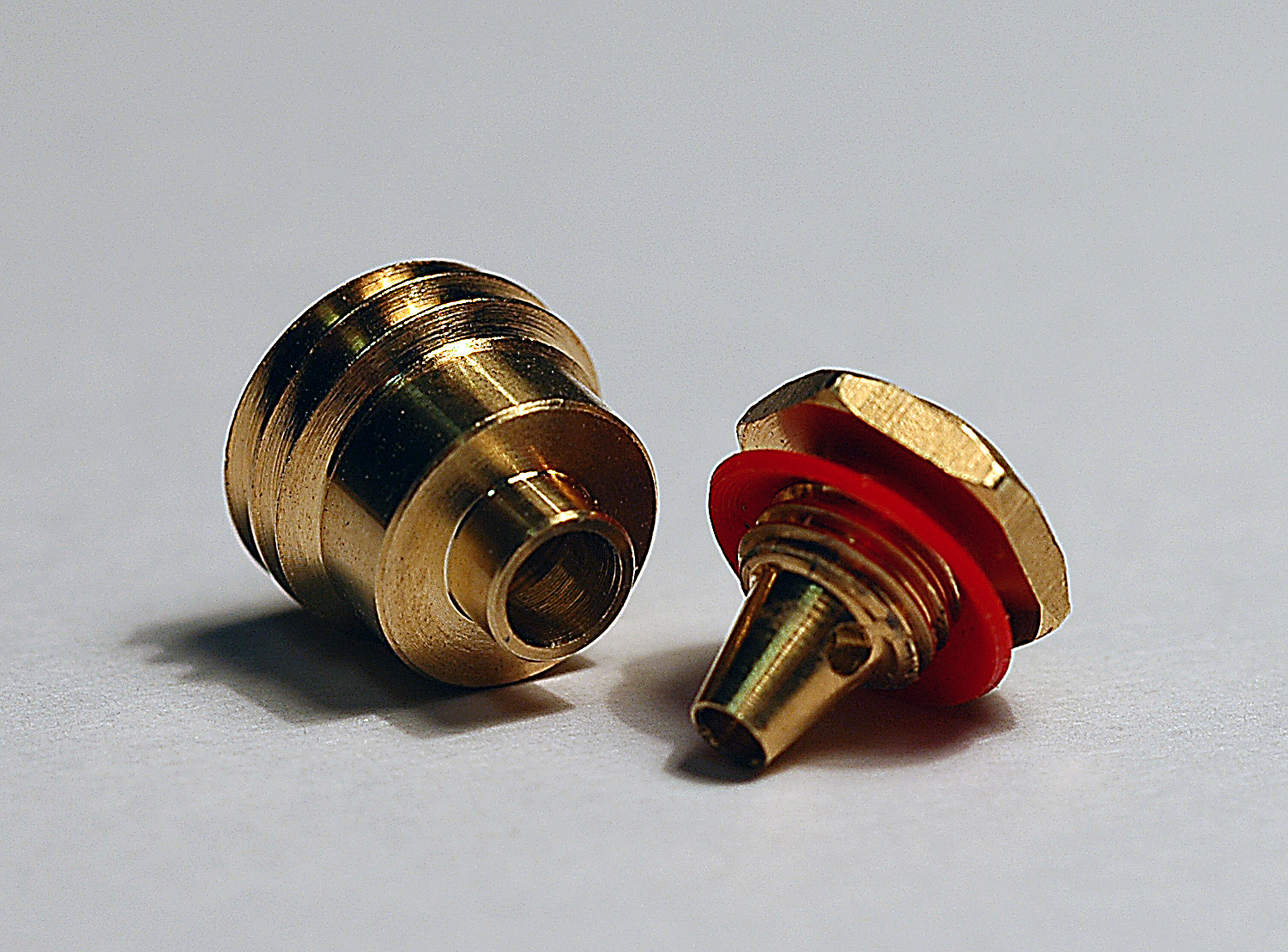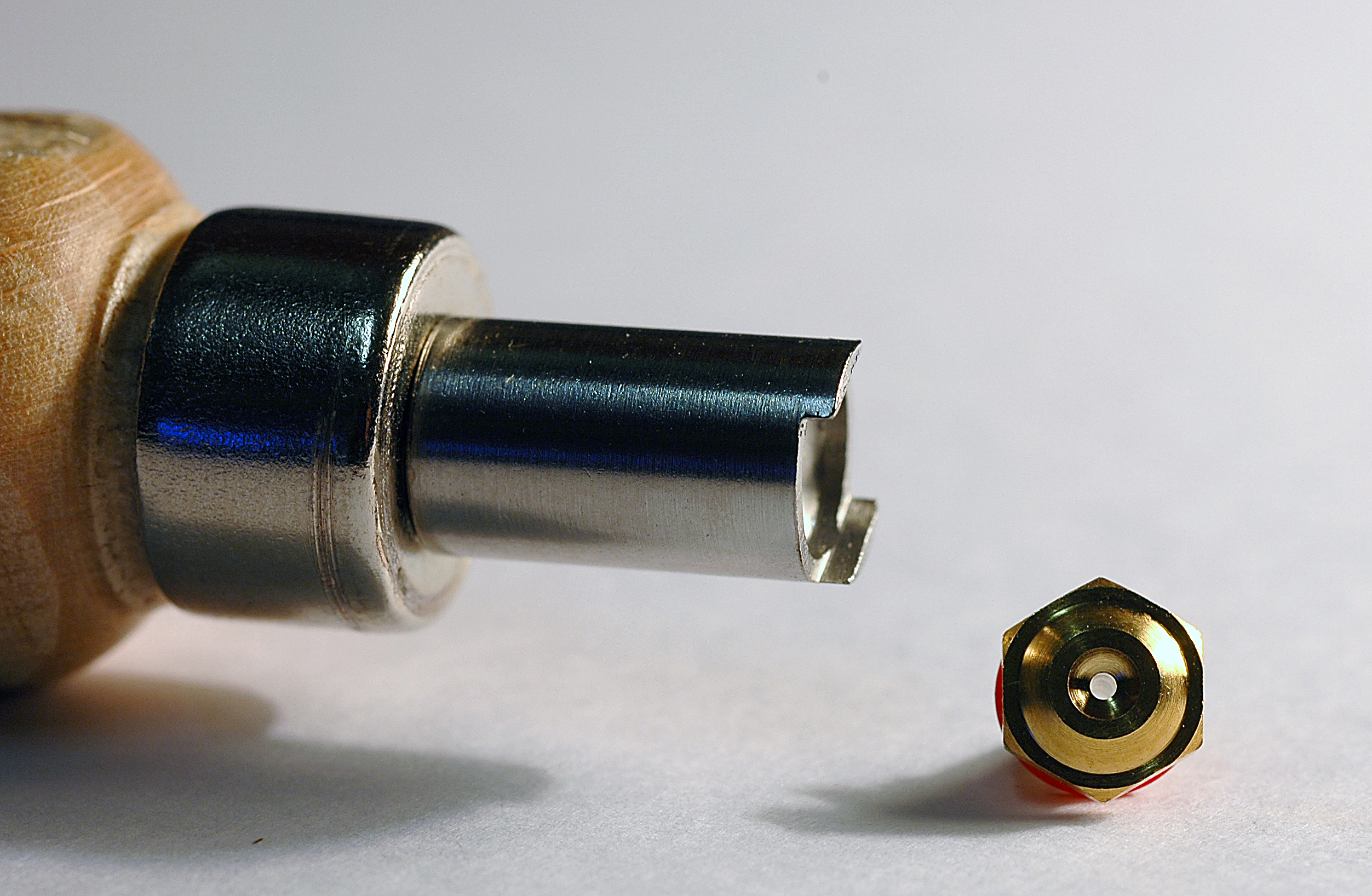No More Blocked Octaves for Oboists!
I first came across these octave box inserts at IDRS 2009 in Birmingham. These clever bits of gadgetry were said to prevent water gathering in the octave pipes. Something that oboists the world over have experienced from time to time, often wrongly described as ‘water in the octave keys’! The propensity for this phenomenon seems to depend on the individual instrument, the climate, the amount of warm-up and not least the courage of the player to take them out and clean them once in a while. I have loads of other theories, too: the type of reed we use for example, and how easily it vibrates in proportion to the amount of air we blow through. The more air we blow through the oboe the bigger the volume of water vapour whizzing past those little metal devices that we need to break the standing waves into their harmonics. More water is then likely to collect in the very narrow diameter octave pipes.
Having communicated with Professor Alberto Castellani, the oboist-inventor, via his website I received a set of the anti- condense octave boxes. These comprise a beautifully turned conical octave pipe and its receiver box, and a key to remove and replace the pipe as the top finish is a hexagon. This is much easier to manage than the usual two indentations in the top plate requiring a twin-pointed remover, anyone who has sheared off the top plate will testify! There are two ways of gaining benefit from this device; either the inserted pipe replaces the existing one, or alternatively an oboe technician can fit the complete assembly. This first option is relatively user-friendly, but it does require skill in re-corking the octave keys, as the height of the new pipe is greater and therefore the angle the cork pad makes with its mating surface has to be well judged. However, I decided to opt for the latter option so I hastened down to Edinburgh where my nearest technician Andrew May works and presented him with the job. An hour later the oboe was ready for collection. Andrew had had to remove a small portion of the wood of the oboe to allow the box to fit, as it has a small cylinder protruding into the walls of the bore and the existing diameter was about 1mm too small (see right).



Testing over a period of months proved very interesting. The most obvious advantage was a feeling of confidence. So this was a psychological benefit. The unexpected advantage was the improvement in the upper notes. When I had the boxes fitted to a Buffet Greenline oboe, on which the second octave notes have never entirely satisfied me, there was a subtle change in the quality of the sound. These notes had been good and stable but a little lacking in character compared to other oboes I own as perhaps now more open and vibrant, and I have heard this comment expressed by other users. What causes this effect is maybe something of the black arts! The pipes I have installed in the Greenline oboe are of the brass variety. There are other materials to be had and some may argue that the plastic inserts might be better against condensation; but how this would affect tonal qualities I am unable to say, as I have not tested those.
Returning to the main issue, do they work? In a word, yes – but with a little caution. Having spent many months playing in mixed climate and temperatures I have to admit that I will not be changing back to the original octave boxes. But I did have one embarrassing moment in an orchestra recently: having recommended these boxes to my colleague I was for the very first time suddenly losing the first octave notes to... water! The cigarette paper was absolutely flooded and I could not stop it!
Water collects in the receiving box under the pipe and is not easy to remove by sharp blowing across the hole. Stopping off the end of the top joint with a finger, closing the holes and sucking the water into the bore helps a little but the water soon collected again. The only cure was to dry out the oboe and blow through the individual octaves, collecting the water on a cigarette paper as normal. I persevered and the same thing happened to the second octave box some days later. When this whole experience happened again a few days later I took the pipes out of the boxes and cleaned them thoroughly with spirit, applied a little Vaseline to the holes before re-assembling. The sealing is easily achieved with the integral plastic washer but I still greased this to help make it airtight. (Waxing-in is probably not necessary.) Since then I have had no problems at all in hours of playing.
The moral in this episode is that cleaning is necessary from time to time; keeping the corks open with a cigarette paper at the very least – as Alberto himself suggests – so that the pipes dry between playing sessions, is also a help.
I have no hesitation in recommending that this invention is well worth having. I have heard argument that the octave box water problem can never be solved but this clever bit of beautiful engineering goes a long way towards that goal.
Signor Castellani can be contacted through his website: www.oboicastellani.it or on Tel/Fax: +39 (0)55 89 54 538 His daughter acts as his trusty translator.
Geoffrey Bridge
I first came across these octave box inserts at IDRS 2009 in Birmingham. These clever bits of gadgetry were said to prevent water gathering in the octave pipes. Something that oboists the world over have experienced from time to time, often wrongly described as ‘water in the octave keys’! The propensity for this phenomenon seems to depend on the individual instrument, the climate, the amount of warm-up and not least the courage of the player to take them out and clean them once in a while. I have loads of other theories, too: the type of reed we use for example, and how easily it vibrates in proportion to the amount of air we blow through. The more air we blow through the oboe the bigger the volume of water vapour whizzing past those little metal devices that we need to break the standing waves into their harmonics. More water is then likely to collect in the very narrow diameter octave pipes.
Having communicated with Professor Alberto Castellani, the oboist-inventor, via his website I received a set of the anti- condense octave boxes. These comprise a beautifully turned conical octave pipe and its receiver box, and a key to remove and replace the pipe as the top finish is a hexagon. This is much easier to manage than the usual two indentations in the top plate requiring a twin-pointed remover, anyone who has sheared off the top plate will testify! There are two ways of gaining benefit from this device; either the inserted pipe replaces the existing one, or alternatively an oboe technician can fit the complete assembly. This first option is relatively user-friendly, but it does require skill in re-corking the octave keys, as the height of the new pipe is greater and therefore the angle the cork pad makes with its mating surface has to be well judged. However, I decided to opt for the latter option so I hastened down to Edinburgh where my nearest technician Andrew May works and presented him with the job. An hour later the oboe was ready for collection. Andrew had had to remove a small portion of the wood of the oboe to allow the box to fit, as it has a small cylinder protruding into the walls of the bore and the existing diameter was about 1mm too small (see right).



Testing over a period of months proved very interesting. The most obvious advantage was a feeling of confidence. So this was a psychological benefit. The unexpected advantage was the improvement in the upper notes. When I had the boxes fitted to a Buffet Greenline oboe, on which the second octave notes have never entirely satisfied me, there was a subtle change in the quality of the sound. These notes had been good and stable but a little lacking in character compared to other oboes I own as perhaps now more open and vibrant, and I have heard this comment expressed by other users. What causes this effect is maybe something of the black arts! The pipes I have installed in the Greenline oboe are of the brass variety. There are other materials to be had and some may argue that the plastic inserts might be better against condensation; but how this would affect tonal qualities I am unable to say, as I have not tested those.
Returning to the main issue, do they work? In a word, yes – but with a little caution. Having spent many months playing in mixed climate and temperatures I have to admit that I will not be changing back to the original octave boxes. But I did have one embarrassing moment in an orchestra recently: having recommended these boxes to my colleague I was for the very first time suddenly losing the first octave notes to... water! The cigarette paper was absolutely flooded and I could not stop it!
Water collects in the receiving box under the pipe and is not easy to remove by sharp blowing across the hole. Stopping off the end of the top joint with a finger, closing the holes and sucking the water into the bore helps a little but the water soon collected again. The only cure was to dry out the oboe and blow through the individual octaves, collecting the water on a cigarette paper as normal. I persevered and the same thing happened to the second octave box some days later. When this whole experience happened again a few days later I took the pipes out of the boxes and cleaned them thoroughly with spirit, applied a little Vaseline to the holes before re-assembling. The sealing is easily achieved with the integral plastic washer but I still greased this to help make it airtight. (Waxing-in is probably not necessary.) Since then I have had no problems at all in hours of playing.
The moral in this episode is that cleaning is necessary from time to time; keeping the corks open with a cigarette paper at the very least – as Alberto himself suggests – so that the pipes dry between playing sessions, is also a help.
I have no hesitation in recommending that this invention is well worth having. I have heard argument that the octave box water problem can never be solved but this clever bit of beautiful engineering goes a long way towards that goal.
Signor Castellani can be contacted through his website: www.oboicastellani.it or on Tel/Fax: +39 (0)55 89 54 538 His daughter acts as his trusty translator.
Geoffrey Bridge